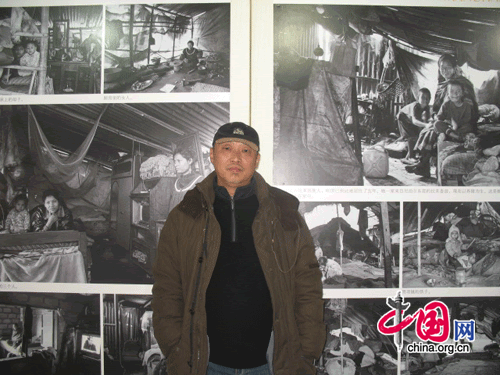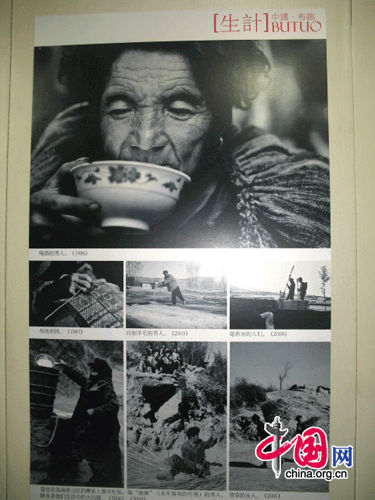Pictures tell of poverty in the age of globalization
"Butuo, Chung Khneas and Manohara," a photography exhibition about poverty in three villages in China, Cambodia and Nepal, opened on December 19 in Beijing, in the Academy Hall of the Central University of Finance and Economy. The photographer, Li Jie, has spent more than 20 years recording local life and culture, and reflecting on the effects of globalization.
 |
|
Li Jie and his works [China.org.cn] |
The 54-year-old former journalist first visited Butuo, a village inhabited by people of the Yi ethnic group, in 1983. Over the next five years, economic reforms helped the local economy develop and boosted the living standards of the villagers. But when Li returned at the end of 1990s he was shocked to find the village had scarcely progressed at all while in the meantime Chinese cities had developed dramatically. The same state rural-urban gap can be found across China as government economic policy has tended to favor cities. Li decided to use his camera to record the process.
After years of hard work and reflection, Li Jie decided to present his work against the background of globalization, because villages like Butuo exist everywhere in the world. From 2006 on, he began visiting another two poverty-stricken villages, in Cambodia and Nepal, with the help funding from a private Asian organization. "Though the cultures, lifestyles and geographical positions differ from each other, the three nations are experiencing the same process of integration with the rest of the world. I wanted to see how this process affects ordinary people's lives and how they react," Li told China.org.cn.
 |
|
Butuo: livelihood [China.org.cn] |
Talking about the reason of years of dedication to this task, Li Jie said: "The principle trait of globalization is the rapid flow of capital and information worldwide. Western countries have much stronger economies than Asian countries. Asia has had to develop urban areas to create a platform for the accumulation of capital. In the process many things are being lost or forgotten including the economic development of vast rural areas. This has widened the gap between the rich and the poor. I have long reflected on how we city-dwellers have benefited from globalization. I undertook this work partly to assuage my guilt as a city-dweller who has benefited from globalization. I also wanted to find some direction and purpose in my life."
The 350 images in the exhibition were selected from hundreds of thousands of pictures taken by Li Jie and are categorized into several themes such as landscape and livelihood, and courtyard and interiors. All the pictures are black and white. The show will last till December 31, 2009. It is located in number 39 Art Space on the first floor of the Academy Hall of the Central University of Finance and Economy, Beijing.
Background:
Butuo is located in Sichuan Province, 2385 m above sea level. Almost its entire population is from the Yi ethnic group. People make their living by farming, and the area is recognized by the government as one of the poorest in China. Chung Khneas is located in Siem Reap in Cambodia and is a tribal community that migrates annually along the shores of the huge seasonal lake the Tonle Sap. Manohara is home to a nameless tribe of vagrants from neighboring countries. It is located to the southeast of Kathmandu, capital of Nepal.
 0 Comments
0 Comments







Comments